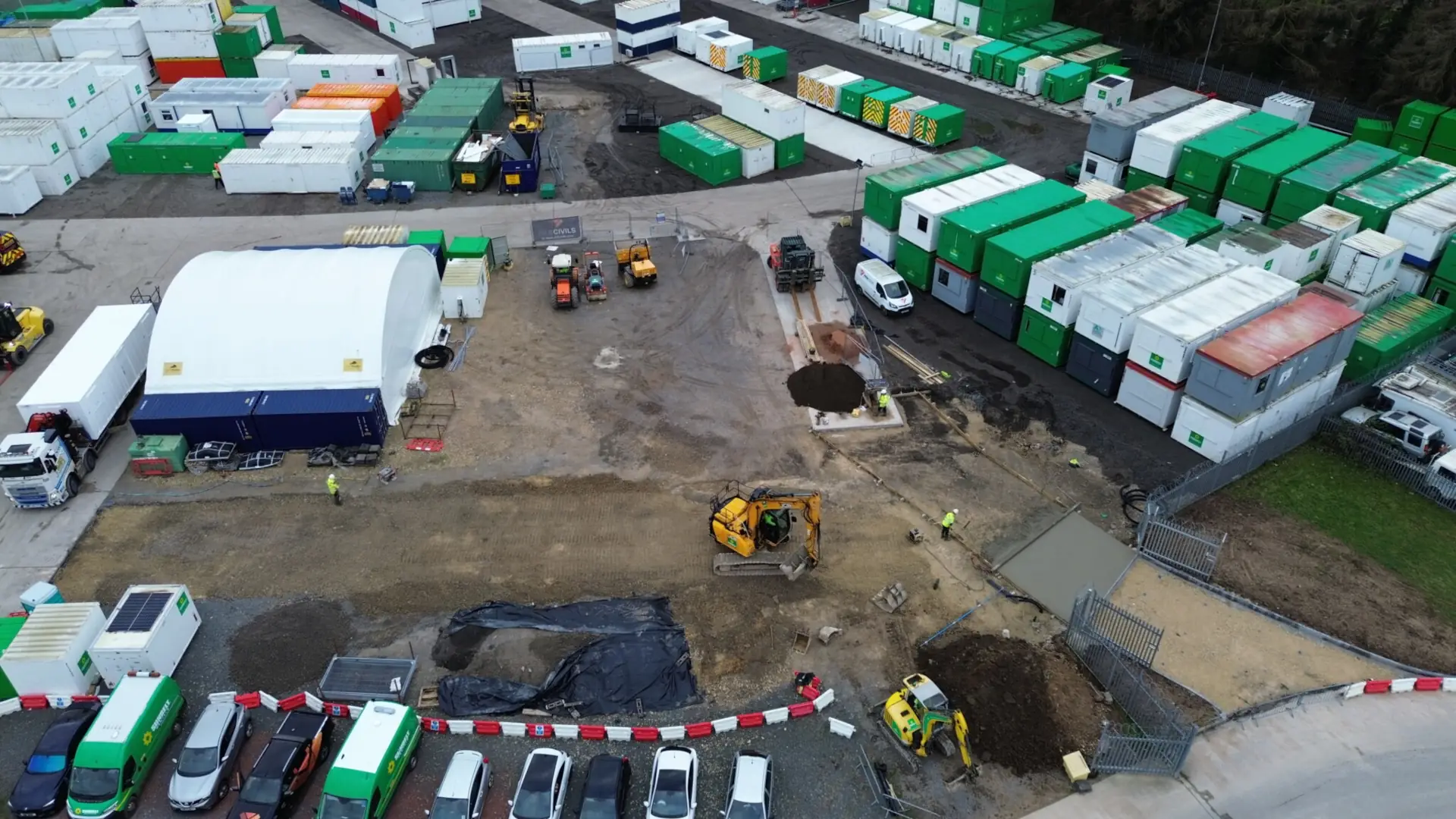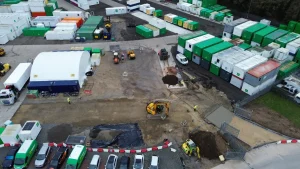

Concrete service yards play a crucial role in construction operations, serving as hubs for material storage, equipment staging, and logistical activities. However, without proper organization and efficient management, these yards can become chaotic and hinder project progress. In this blog post, we’ll explore essential layout design tips to optimise concrete service yards, focusing on maximising space, improving organisation, and enhancing overall efficiency.
Maximising space in concrete yards.
One of the primary challenges in concrete yards is space utilisation. To make the most of available space, consider the following tips:
- Vertical storage solutions: utilise vertical space by installing shelving units or racks for storing smaller materials and tools. This frees up floor space for larger items and equipment.
- Strategic material placement: group similar materials together and arrange them based on frequency of use. Place frequently accessed materials closer to the entrance for easy retrieval, while less-used items can be stored towards the back.
- Compact equipment storage: opt for compact storage solutions for equipment such as scaffolding, ladders and small machinery. Wall-mounted hooks or specialised racks can keep these items organised and easily accessible without occupying valuable floor space.
Efficient concrete yard management.
Efficient management is essential for smooth operations in concrete yards. Implement the following strategies to streamline yard management:
- Clear traffic flow: designate clear pathways for vehicle and pedestrian traffic to prevent congestion and accidents. Use markings or barriers to delineate these pathways and enforce safety protocols.
- Regular inventory audits: conduct regular inventory audits to track material usage and identify surplus or shortages. This helps prevent overstocking and ensures timely replenishment of essential supplies.
- Digital tracking systems: implement digital tracking systems or inventory management software to monitor material movements, track deliveries, and streamline communication between team members. These tools provide real-time visibility into yard operations and facilitate efficient decision-making.
Concrete service yards organisation.
Organising concrete yards effectively is key to maintaining a productive work environment. Consider the following organisational tips:
- Zone classification: divide the yard into designated zones based on material type, project phase or equipment category. Clearly label each zone for easy identification and navigation.
- Standardised storage procedures: establish standardised procedures for storing and retrieving materials to maintain consistency and minimise errors. Train personnel on these procedures to ensure adherence and efficiency.
- Regular maintenance schedule: implement a regular maintenance schedule to keep the yard clean, organised, and hazard-free. Clear debris, repair damaged storage units and inspect equipment to prolong their lifespan and functionality.
Optimising concrete service yards requires careful planning, efficient management and a commitment to organisation. By implementing the layout design tips outlined in this post and prioritising space maximisation, efficient management and strategies, you can create streamlined and productive concrete yards that support project success.

 0161 533 0921
0161 533 0921  info@pkbcivils.com
info@pkbcivils.com 